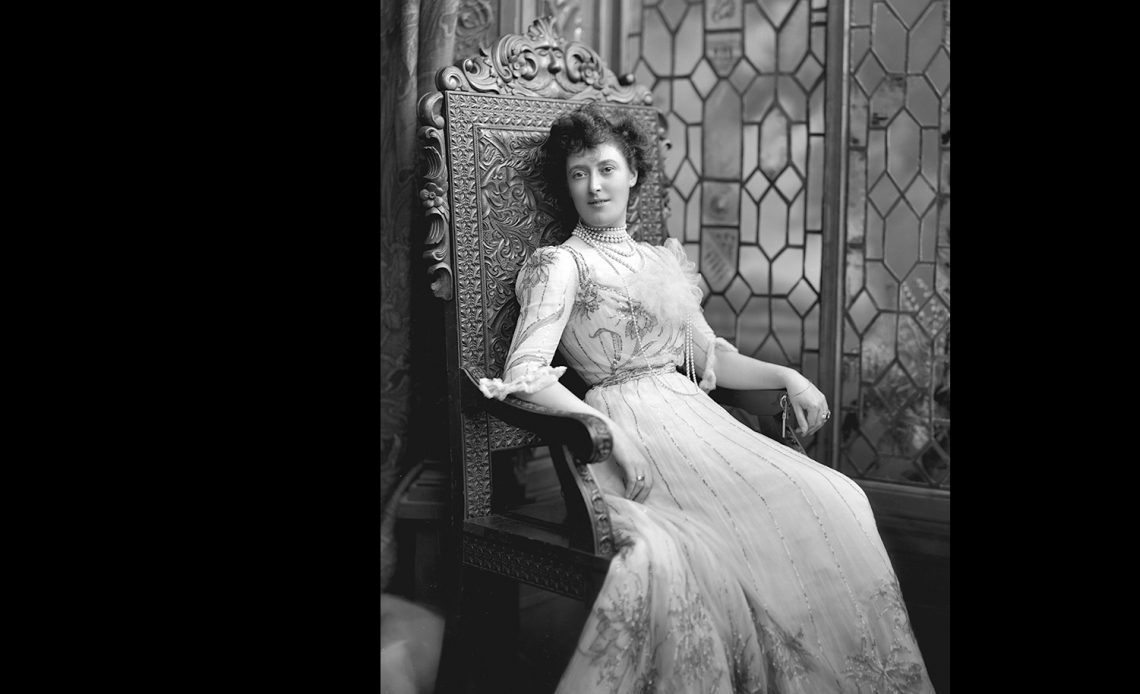
Margaret Greville is not a household name. Outside royal circles and National Trust devotees, her story is often overlooked. Yet her influence sparkles (quite literally) from the brows, necks and wrists of the British Royal Family to this day. Many of the most recognisable royal tiaras, necklaces and brooches originate not in the royal vaults, but in the private jewel boxes of The Hon. Mrs Ronald Greville, a woman whose life was as glittering as the gemstones she treasured.
Born Margaret Helen Anderson in December 1863, she was the daughter of William McEwan, the wealthy brewery magnate, and his mistress, Helen Anderson. Although her parents married when she was 21, whispers around her legitimacy lingered for years. Yet McEwan’s fortune made her a highly desirable match, and in 1891 she married Captain Ronald Greville, heir to a baronetcy and a prominent figure within the Marlborough Set.
Their world was glamorous and intensely social, but Margaret’s life changed dramatically when Ronald died in 1908. Childless yet enormously wealthy, she poured her energy into Polesden Lacey, the Surrey estate the couple had bought two years earlier. It was there she cemented her reputation as one of the great society hostesses of the age.
Her parties were famously lavish. Edward VII attended her inaugural gathering in 1909, and she formed close friendships with the highest echelons of royalty, particularly Queen Mary. Her connection to the Royal Family deepened further in 1923, when she hosted the two-week honeymoon of the Duke and Duchess of York, later King George VI and Queen Elizabeth.
That friendship would ultimately shape the royal jewel collection in ways that endure to this day.
When Margaret died in September 1942, she left behind no heirs—but she did leave one of the most remarkable private jewellery collections in Britain. Her will included several notable bequests, such as £20,000 to Princess Margaret and £12,500 to Queen Victoria Eugenie of Spain. But her most extraordinary gift was reserved for Queen Elizabeth, the future Queen Mother:
All of Margaret Greville’s jewels were bequeathed to her “to be worn by Queens.”
The full extent of the Greville collection remains a closely guarded royal secret. It is said to have included a necklace once belonging to Marie Antoinette, and its pieces span some of the finest craftsmanship of the early 20th century.
Several items, however, have become modern icons.
The Greville Tiara, often called the Honeycomb Tiara, was a signature piece of the Queen Mother and is now regularly worn by Queen Camilla. And the striking Greville Emerald Kokoshnik Tiara, made by Boucheron in 1921 with its dramatic 93-carat central emerald, became instantly world-famous when Princess Eugenie wore it on her wedding day in 2018.
This week, it made a rare and unexpected return.
At the Diplomatic Reception on Tuesday evening, Queen Camilla surprised royal watchers by wearing the very same emerald tiara once worn by Eugenie—a nod not only to her daughter-in-law’s elegant bridal moment, but also to the enduring legacy of the Greville bequest. It was a quiet but powerful reminder that Margaret Greville’s jewels were designed to be passed through generations, adapting to new royal eras while retaining their original grandeur.
Other pieces from her treasure trove include the Greville Festoon Necklace, the Greville Ivy Clips, the Greville Chandelier Earrings, the Ruby and Diamond Floral Bandeau Necklace, and the Greville Pearl Drop Earrings.
Each gem tells part of Margaret Greville’s extraordinary story—a tale of fortune, scandal, impeccable taste and an unshakeable desire for her beloved jewels to be worn by queens. And though her name may not be widely known, her legacy continues to shimmer at state banquets, diplomatic receptions and royal weddings, ensuring that her influence endures with every flash of royal diamonds.

